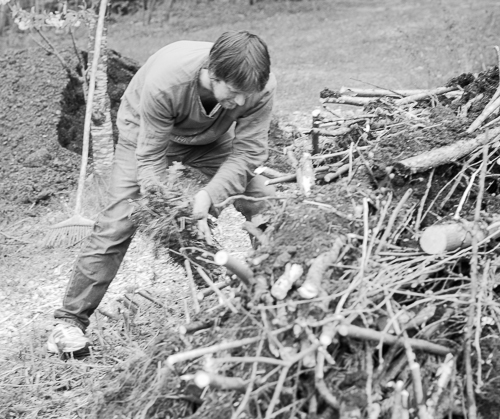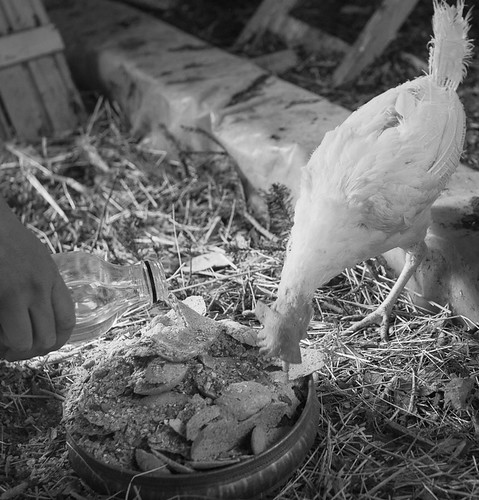Permaculture “is a philosophy of working with, rather than against nature; of protracted and thoughtful observation rather than protracted and thoughtless labor; and of looking at plants and animals in all their functions, rather than treating any area as a single product system.” – Bill Mollison.
Being a follower of Bærum permakulturforening, I get updates of their activities frequently. Since summer is approaching, they are planning a course which is called Permaculture Design Certificate Course or PDC for short. Since permaculture is such a large subject, the PDC is scheduled to last 72 hours amounting to 9 consecutive days. Being curious about what this course was about, I contacted Eivind permaculture designer Bjørkavåg to ask if I could join him at his permaculture place. Having made an appointment, I arrived at where the course should take place. There, he showed me a plastic bag full of bread crumbs, sunflower seeds, grains, crusts and cuttings obtained from a cutting machine at a local supermarket. Bringing a bottle of water as well, he entered a small building where hens where walking around freely. In fact, they were pensioners having spent their short lives laying eggs and would have been finished off if they hadn’t been given for free to the permaculture society.
For all domestic animals, the poop has to be handled somehow. Being permaculturists, Eivind and his collaborators are using a technique called deep litter in order to turn it into compost. That is, they first covered the floor with straw, compost and humus-rich soil on which the chicken poop will end up. Sprinkling the floor with seeds will make the hens scratch and peck the ground such that the mixture of compost, soil, poop and straw is aerated and turned into compost which can be used as a soil conditioner, fertiliser, etc. Having fed the hens cereals, seeds and water, we could turn to the permaculture site, while they were eating, pecking and kicking straw covering the floor of their house.
An alternative to deep litter is described here.
Some advice on keeping hens can be found here.
An article on chicken feed can be found here.
Having expected some kind of rock garden, instead I could see small enclosures which were covered with pieces of the local vegetation with the soil upside down such that the vegetation would die, while the roots would keep the soil from being washed away by rain, while other enclosures were covered with rotting wood.
The most conspicuous feature of this wild-growing property was a row of wood about one metre high shaped like a semicircle with the opening facing south creating a protective zone against cold. This is called hügelkultur and is a way of replicating nature where rotting wood is used as a “nursery” for young plants. There was a big pile of soil next to the hügelkultur, parts of which we put on the wooden row. Then, we used spades to extract vegetation with topsoil and put it evenly on the wooden row, always with the vegetation facing downwards. When everything is finished,various seeds will be planted in the soil. At the same, the underlying wooden row will start rotting, providing nutrients to the growing plants. At first, the seeds will have to be watered, but after same time, they will be self-sufficient.
The PDC course will take place in July 2014 and it will be inside the hut on the same property. Topics covered will include:
• Principles of Natural Systems
• Sustainable Design Methodologies
• Patterns in Nature, Culture and Society
• Reading the Land & Understanding Natural Processes
• Large Scale Land Restoration Techniques
• Water Harvesting Techniques
• Design Principles of Sustainable Human Settlements
• Grey Water Recycling
• Natural Building Strategies
• Cultivated & Productive Ecologies
• Food Forests, Plant Guilds, Gardens for Self-Sufficiency
• Energy Conservation Technologies
• Appropriate Technologies and Renewable Energies
• Urban Environment Permaculture
• Wildlife Management and Biological Pest Control
• At the end of the class, students engage in an individual design project.
Obviously, permaculture is a huge subject and the PDC should be considered as a starting point only. For more information, please have a look at Bærum permakulturforening.


